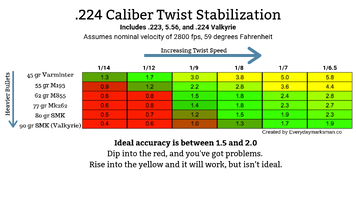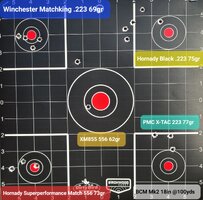peterk123
NES Member
I have a boatload of 55 grain. Great for general plinking but I just can't get great accuracy. Not even at a 100 yards. Is the round not getting stabilized and should I be going heavier, like 75 grains?
I'm trying to get the gun to be coyote ready. I always figured 55 grain was good in just about any AR.
I'm trying to get the gun to be coyote ready. I always figured 55 grain was good in just about any AR.



